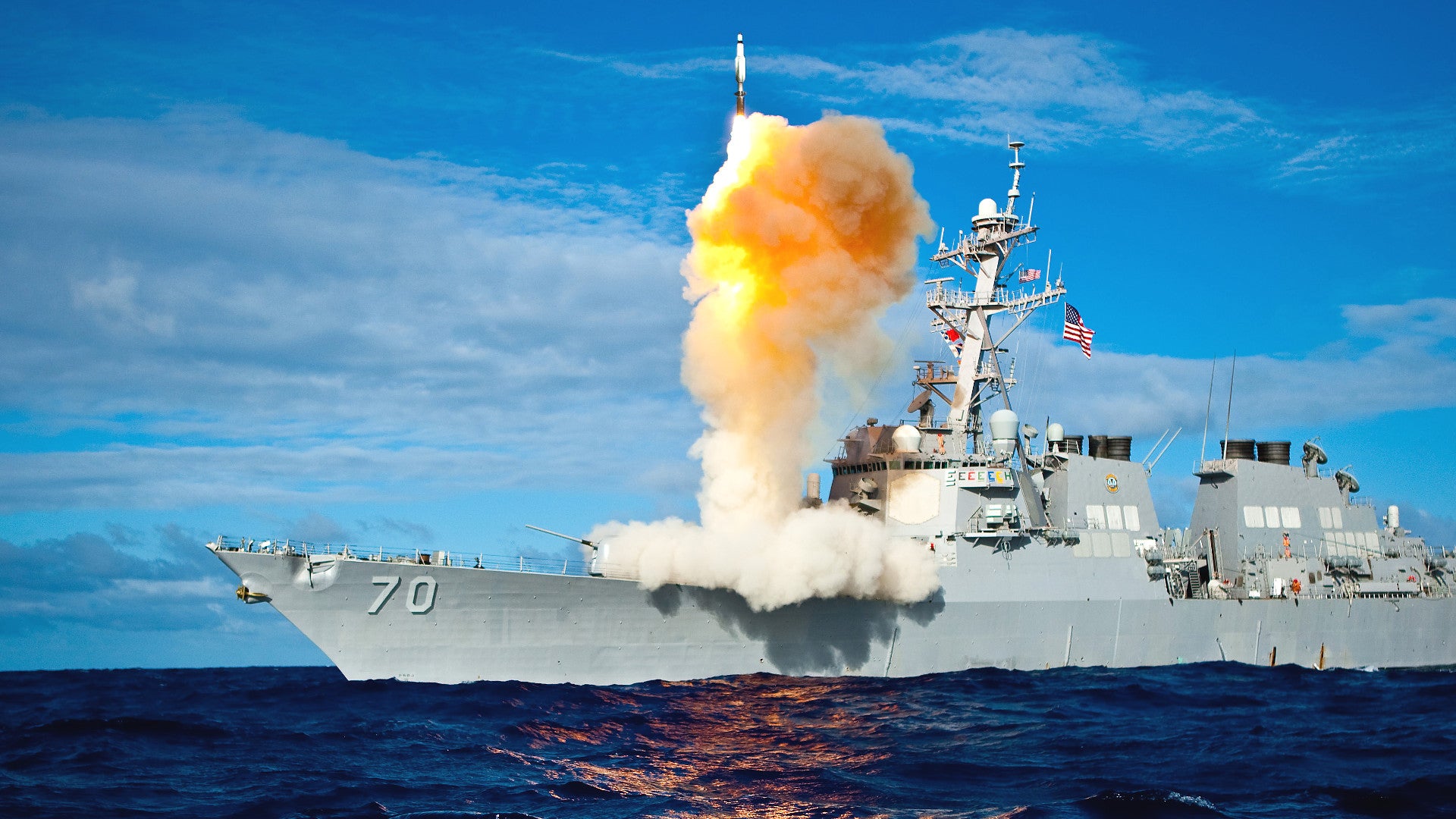The U.S. military is developing an interceptor intended to knock down hypersonic boost-glide vehicles specifically for deployment on U.S. Navy Arleigh Burke class destroyers equipped with the Aegis Ballistic Missile Defense system. This comes as that service says it expects to soon send two more of those destroyers to Spain, where they would join four other ships of that class that are forward-deployed there to, among other things, provide regional missile defense coverage.
U.S. Navy Vice Admiral Jon Hill, head of the U.S. Missile Defense Agency (MDA), offered the new details on what is formally known as the Regional Glide Phase Weapon System (RGPWS) program at the annual McAleese Defense Programs Conference in Washington, D.C. on Mar. 4, 2020. U.S. Navy Admiral Michael Gilday, the Chief of Naval Operations, the service’s top officer, discussed plans for the additional forward-deployed Arleigh Burkes while testifying before the Senate Armed Services Committee on Mar. 5.
Vice Admiral Hill did not specifically say which ships might eventually carry the RGPWS, but did say that this interceptor was being designed to fit inside a Mk 41 Vertical Launch System (VLS) launch cell. MDA’s budget request for the 2021 Fiscal Year, a public version of which came out last month, does specifically mention plans to integrate this interceptor with the Aegis Ballistic Missile Defense (BMD) system, which is found on a number of Arleigh Burkes, as well as Aegis Ashore land-based missile defense sites.
In the 2020 Fiscal Year, MDA will “begin Aegis Weapon System analysis to determine preliminary design modifications to support Glide Phase Weapon Control and Integration, to include physical and software required modifications,” according to the Fiscal Year 2021 budget proposal. “Analysis based on initial modeling to identify system design gaps and integration challenges needed to incorporate Glide Phase Weapon Control changes in the Aegis Weapon System” will begin in the 2021 Fiscal Year.

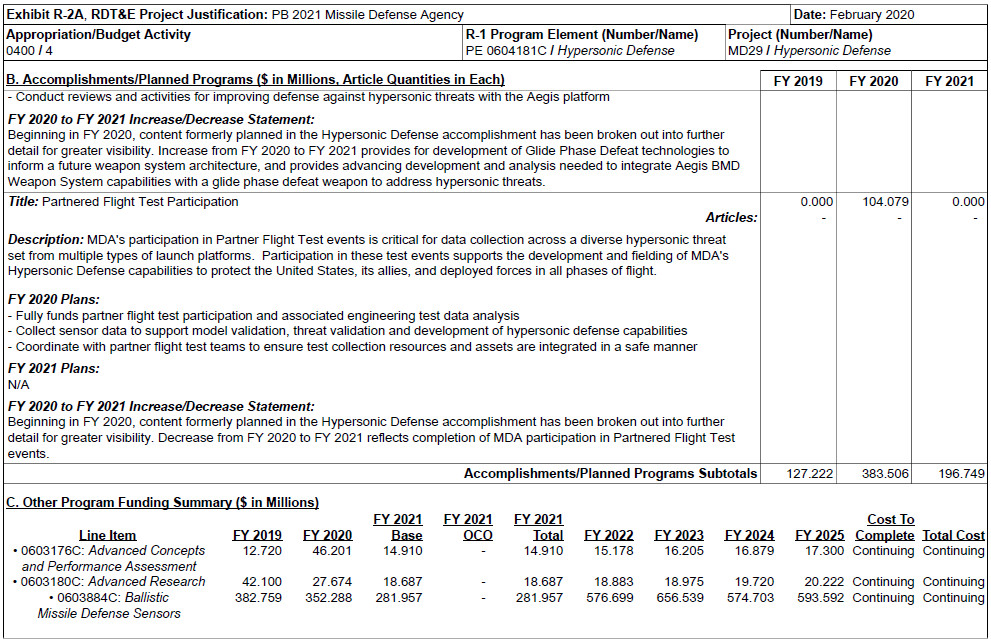
In total, MDA has asked for just over $117 million in Fiscal Year 2021 for the overall “Glide Phase Defeat Weapon System” effort, which includes the development of the RGPWS interceptor and the improvements to the Aegis BMD system, as well as other supporting work. It received a little over $88.5 million in the previous fiscal cycle for these projects.
Aerospace Daily was first to report the existence of the RGPWS program in December 2019. This is separate from MDA’s Hypersonic Defense Weapon System (HDWS) effort and the Defense Advanced Research Projects Agency’s (DARPA) Glide Breaker project.
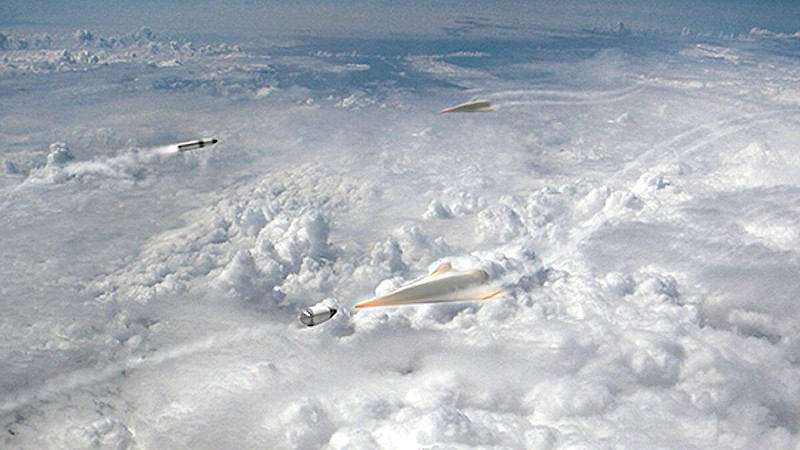
Publicly available details about the RGPWS interceptor’s design remain limited. MDA has been clear that it is primarily intended to knock down unpowered hypersonic boost-glide vehicles, rather than air-breathing hypersonic missiles. A boost-glide vehicle uses a rocket booster to loft it to a suitable altitude and speed, after which it follows a relatively level trajectory to its target.
The name of MDA’s program had also already indicated that it would be a “regional” focused system aimed at defending against hypersonic boost-glide vehicle threats in different theaters around the world, such as Europe and Asia. Russia said that its Avangard boost-glide vehicle, which rides on top of a silo-launched rocket booster taken from an earlier intercontinental ballistic missile design, entered service in late December 2019. Nearly three months earlier, China had shown off mockups of its road-mobile DF-17, which also carries a hypersonic boost-glide vehicle, for the first time at a massive military parade in Beijing.

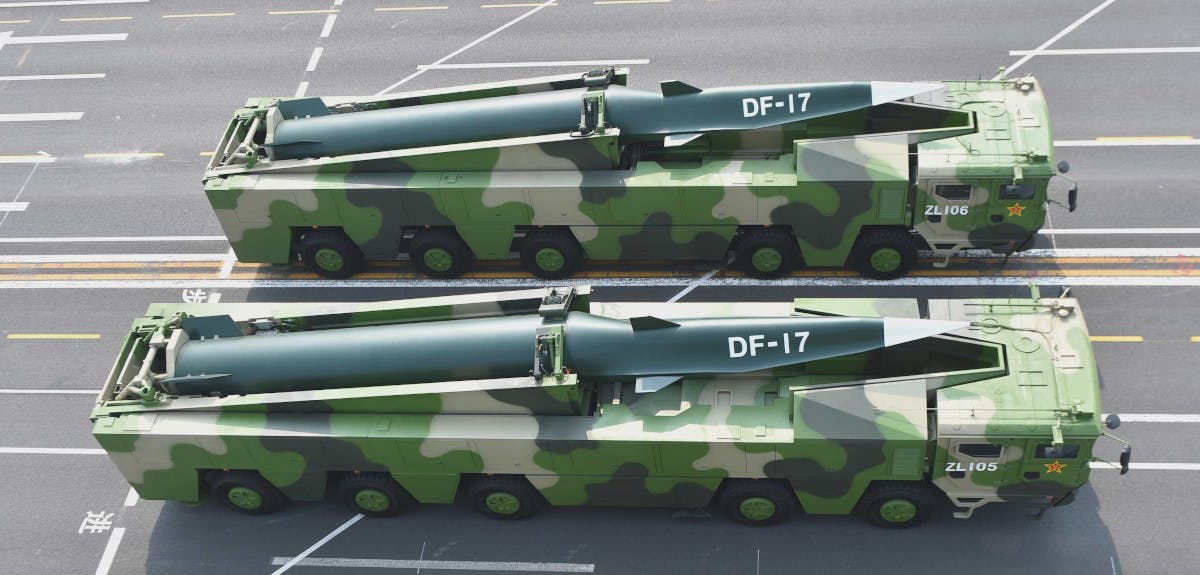
Avangard is a nuclear-armed strategic weapon, while the DF-17 is widely reported to be a tactical weapon with a conventional warhead. The U.S. government also says that it believes the Chinese, which are developing other hypersonic weapons, are working on their own nuclear-tipped hypersonic boost-glide vehicle weapon, as well.
Depending on the exact design of the interceptor, as well as the capabilities of the modified Aegis BMD system, it may also be capable of engaging other unpowered hypersonic threats that are emerging, including new air-launched ballistic missiles with more advanced maneuvering capabilities. Russia has already put one such system, the Kh-47M2 Kinzhal, into limited operational service and China is developing its own capabilities in this regard.

With all this in mind, it’s not hard to see why there would be interest in integrating the RGPWS interceptor onto Aegis BMD-configured Arleigh Burkes, which are forward deployed to Spain, as well as Japan, first. The ships offer added flexibility to rapidly reposition themselves in response to new developments during a crisis or an actual major conflict. They can also take up station far closer to potential launch areas, an important consideration when dealing with hypersonic threats, which can cross large distances in relatively short amounts of time.
MDA has already said that the future space-based Hypersonic and Ballistic Tracking Sensor System will support the RGPWS, according to Aviation Week. The satellites, which MDA hopes will be in orbit within three years, will be able to detect hypersonic weapon launches inside hostile territory and then cue other sensors, including those at sea and on land, to track them ahead of a possible intercept attempt.
It’s also not surprising then to have learned that the Navy is expecting to get orders to deploy the two additional Arleigh Burke to Spain. The service has opposed these missile defense-focused forward deployments in the past, arguing that it places a severe strain on its resources to have to dedicate destroyers to this mission, which consists of effectively having the ships patrol in circles for extended periods of time.
However, U.S. European Command, as well as members of Congress, see the mission as critical and have apparently swayed Navy leadership for the time being. “We support the additional two DDGs to Spain,” Admiral Gilday told lawmakers on Mar. 5, using the abbreviation for guided-missile destroyer to refer to the Arleigh Burkes.
“We are very supportive and right now our understanding is that the Spanish want us there in greater numbers,” Gilday continued. “Certainly the commander of U.S. European Command does.”
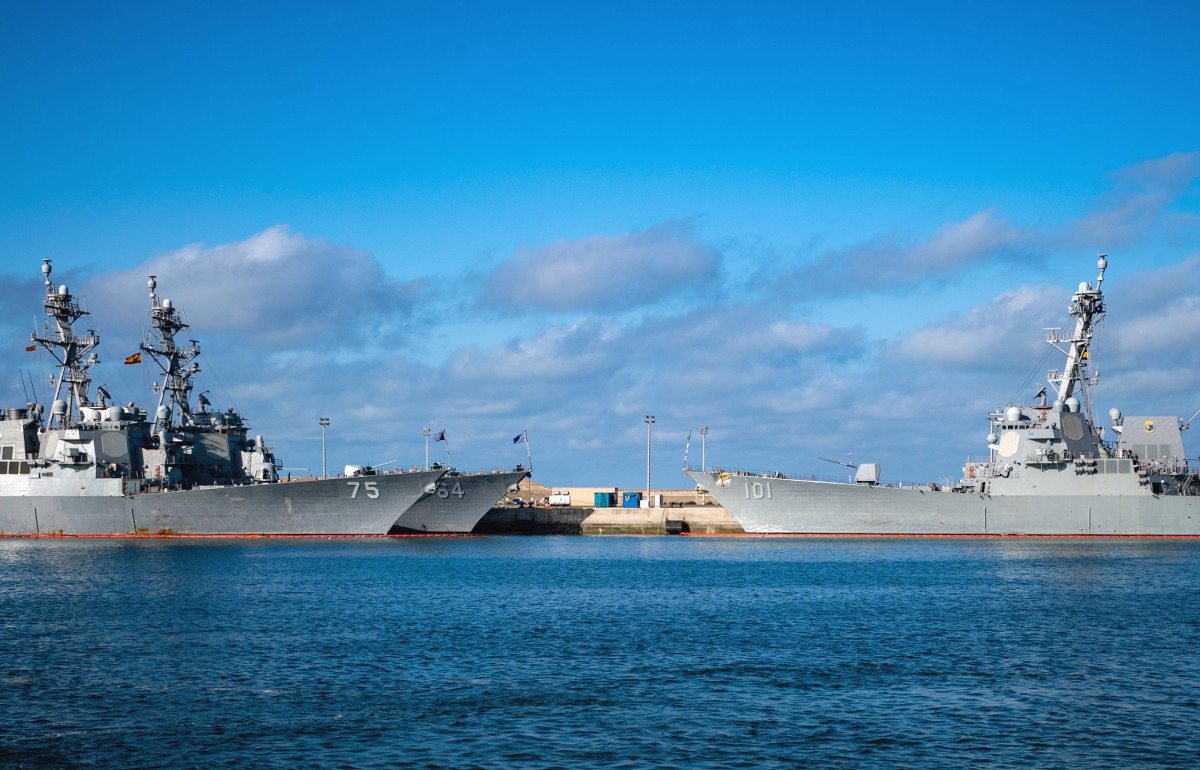
“Those two additional DDGs would allow us the opportunity to continue to improve our ability to get indications and warnings in the potential battlespace and also dramatically improve our ability to better command and control,” U.S. Air Force General Tod Wolters, the present head of U.S. European Command, had told the Senate Armed Services Committee during his own testimony last week.
Of course, just because the RGPWS interceptor is expected to be fielded first on the Aegis BMD-configured Arleigh Burkes, there’s no reason to believe that it would necessarily remain limited to those ships. The Aegis Ashore sites use the same architecture, which would allow them to readily integrate the RGPWS, as well. There could also be foreign interest, especially from Japan, which operates Aegis BMD-equipped destroyers of its own and is planning to establish Aegis Ashore sites in the future.
It’s worth noting that critics have questioned how capable any anti-hypersonic weapon interceptor might ever be due to the speed of the threats and the complexities involved in intercepting them. These are concerns that apply to ballistic missile defense broadly. Chairman of the Joint Chiefs of Staff U.S. Army General Mark Milley raised his own questions about this at yet another hearing before the Senate Armed Services Committee on Mar. 4.
“There is no defense against hypersonic … you’re not gonna defend against it,” he told lawmakers “Those things are going so fast you’re not gonna get it. You gotta shoot the archer. You gotta go deep, downtown and you gotta get it on the offense.”
Still, with the explosion of hypersonic weapon developments around the world in recent years, there will undoubtedly remain an interest in the potential for various layers of interceptors, as well as sensors to support them, to at least try to mitigate the threat of new hypersonic weapons. The Navy’s Aegis BMD-configured Arleigh Burke class destroyers do look set to be among the first platforms to actually carry an anti-hypersonic weapon.
Contact the author: joe@thedrive.com
